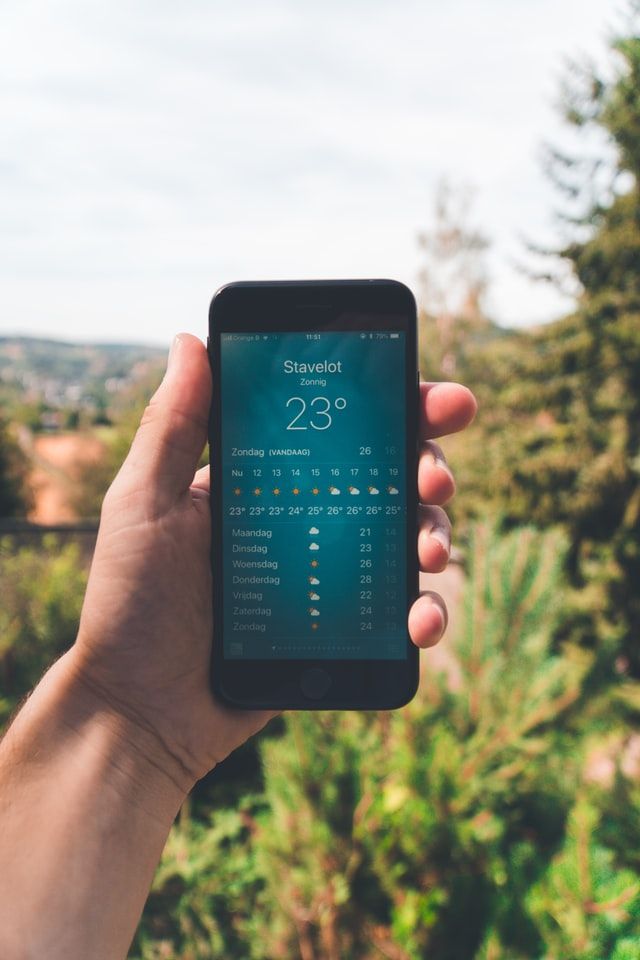Yahoo Weather API Alternatives
 Ry Vee
Ry Vee
For beginner developers, the Yahoo Weather API might be enough to build simple weather applications.
Yahoo, however, has a lot of limitations as it only provides location-specific current data and ten-day historical data.
If your application requires more features and information, using this free API may not be the best option.
What follows is a list of the best alternatives to the Yahoo weather API along with their key benefits and features, most common use cases, and pricing.
ClimaCell Microweather API
ClimaCell’s Microweather API provides a wide range of information offered both as numerical data and map layers. It can provide up to four weeks of historical data from partner stations and up to six hours of historical data from its own observations.
Key features/benefits of the ClimaCell Microweather API:
- Artificial intelligence-driven data model that processes data from a wide range of sources such as drones and IoT devices
- Map layers for more than 20 parameters
- Hyper-local and global historical and real-time data
- Out of the box templates for easier crafting of request calls
Best used for:
- Most corporate applications. The API is used by companies such as Ford and Uber.
Pricing: Free plan allows for up to 1,000 calls per day. Paid plans start at $87 per month.
OpenWeatherMap API
OpenWeatherMap is an API inspired by Wikipedia’s crowdsourcing model. It is probably the most popular weather API because of its simplicity.
Key features/benefits of the OpenWeatherMap API:
- Very simple to use
- 40-year historical weather data for any location
- Useful data visualization such as a “this-day-in-history” chart
- 16-day forecast for several locations
- Three-hour and five-day forecasts
- Very accurate data as it collects from over 40,000 stations globally
- Creative Commons Share-Alike licenses on weather maps which allow developers to easily build map-based applications
Best used for:
- Personal weather stations and simple projects for developers
- Applications geared toward the agricultural sector
Pricing: Its free tier allows for up to 100 calls per day. Paid plans start at $40 per month.
Accuweather API
Accuweather is another very popular weather API. It processes over 30 billion requests daily and provides imagery endpoints.
Key features/benefits of the Accuweather API:
- Developers can quickly get started with its Apigee portal (Accuweather’s project with Google).
- Its “Indices API” provides other useful information such as flight delays, mosquito activity, data for stargazers, and a host of daily indices for specific locations.
- It provides engaging video presentations along with the minute by minute forecasts.
- As its name suggests, it provides super accurate weather data for almost any point on earth.
- Weather information can be customized.
Best used for:
- It’s the best option if the application needs to have video presentations.
- Applications geared toward managing disaster risks.
Pricing: It has a limited trial that allows for 50 calls daily. Paid plans start at $25 per month.
Stormglass API
The Stormglass weather API provides high-resolution forecasts globally from renowned meteorological institutions. It allows developers to fetch data from any coordinate through simple HTTP requests.
Key features/benefits of the Stormglass API:
- It provides up to 10-day forecasts with high-resolution.
- Provides marine information such as tides, water chemical analysis.
- Provides data for renewable energy (wind and solar indices) as well as agricultural information (soil moisture, surface temperature).
Best Used For:
- Marine-related applications.
- Renewable energy monitoring.
- Agricultural organizations.
Pricing: It has a free tier that allows up to 50 daily API calls. Paid plans start at 16 euros a month.
Weather Company API (IBM)
The Weather Company API is owned by IBM and is part of a much more comprehensive data package. Its main value proposition is the provision of highly actionable insights that allows business to optimize their operations and reduce costs while increasing the bottomline.
Key features/benefits of the Weather Company API:
- It provides very accurate forecasts of about 500-meter resolution.
- It has an extensive number of information sources including high-resolution observations from 250,000 weather stations.
- It provides historical data encompassing a 35 kilometer worldwide grid allowing businesses to understand patterns to make better decisions relating to weather.
- It provides real-time severe weather forecasting.
- It also provides non-weather information such as air-quality, pollen and flu indices.
Best Used For:
- Business relying heavily on quick forecasts as well as long historical weather data.
Pricing: Free trial that allows for up to 10 calls per minute. The trial then expires once the limit of 10,000 free calls is consumed. Paid plans start at $24.95 per month.
Weather 2020 API
Weather 2020 prides itself on being a predictive weather modeling platform. Its main proposition is that it can provide for up to nine months forecast just based on the preceding three-month observation. Its statistical model is based on the work of famed meteorologist Gary Lezak.
Key features/benefits of the Weather 2020 API:
- It provides long-term forecasts allowing businesses and organizations to have longer planning horizons.
- It offers over 10-million forecasts per day and is best used for mobile applications.
- It has a very interactive dashboard that displays key information, analytics and graphs.
Best Used For:
- Mobile weather applications.
- Creating video forecasts (available for paid plans).
Pricing: The free plan allows for up to 1,000 API calls per day. Paid plans start at $ 9.99 per month.
Conclusion
As we’ve seen from the list above, each option has certain use-cases for which it is best suited. This is, by no means, an indication that these are the only uses these APIs have.
What you select will depend on several factors including cost, amount and accuracy of data required, as well your own preferences.
Subscribe to my newsletter
Read articles from Ry Vee directly inside your inbox. Subscribe to the newsletter, and don't miss out.
Written by
